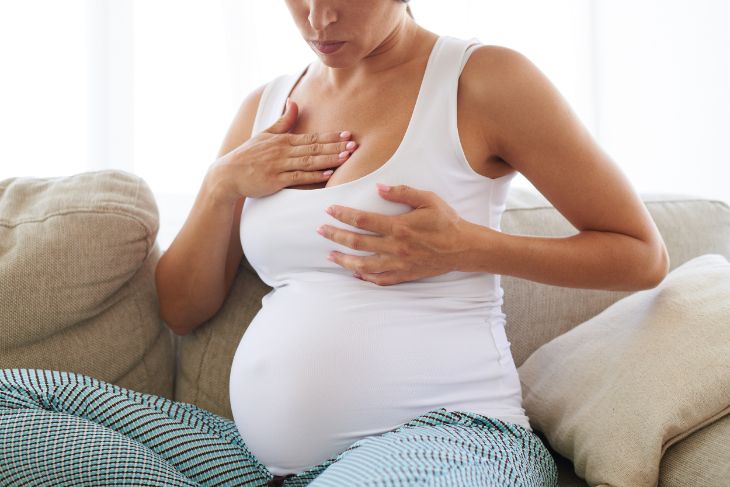
Free online quote
A third breast or nipple (also known as supernumerary nipple, in the case of multiple nipples) is a condition where you have one or more additional nipples on your body. They add to the two usual nipples of the breasts.
The third breast or nipple, or the presence of multiple nipples, is also known as polymastia or polythelia. The exact number of people affected by this condition is not known. According to the Genetic and Rare Diseases Information Center (GARD), it is a rare condition. It is estimated that about 200,000 Americans have one or more additional nipples (less than half a percent of the U.S. population). They are also more common in men than in women.
While a third nipple is the most common number of additional nipples in people with this condition, it is possible to have up to eight supernumerary nipples.
How can I tell if I have a third breast (or nipple)?
A third nipple or supernumerary nipple is usually not as developed as a normal nipple. You may not be able to immediately recognize an extra nipple. Some simply appear as small bumps without the familiar characteristics of a nipple, but others may resemble a normal nipple at first glance.
Third nipples most often appear on the “milk line.” This is the area located at the front of the body, which starts under the armpit and runs down along the nipples to the genitals. This is the easiest way to distinguish between an extra nipple and a mole or birthmark. Moles and birthmarks also tend to be flat and do not have ridges or bumps resembling nipples.
However, not all extra nipples appear in this location. They can appear almost anywhere on your body, even on your hands or feet. These are called ectopic supernumerary nipples.
Types of supernumerary nipples (3 nipples)
Supernumerary nipples can be classified into several different categories based on their size, shape, and tissue composition:
Category 1 (polymastia): The additional nipple is surrounded by an areola (the soft, circular tissue surrounding the nipple) and typical breast tissue underneath, meaning a complete breast has developed.
Category two: the additional nipple has breast tissue underneath but no areola is present.
Third category: The extra-nipple area has breast tissue underneath but no nipple is present.
Category four: The additional nipple has breast tissue underneath but no nipple or areola is present.
Category five (pseudomamma): The additional nipple is surrounded by an areola but only fatty tissue is present underneath instead of breast tissue.
Category six (polythelia): The additional nipple appears alone, without an areola or breast tissue underneath.
Why do some women have 3 nipples?
The development of the 3 nipples occurs while the human embryo is developing in the uterus.
During the fourth week of pregnancy, the two milk lines of the embryo, which are made up of striated ectodermal tissue (a type of tissue that will become part of your skin), thicken.
Normally, the tissue of the milk line remains thick and forms your nipples while the rest of the thickened skin softens again. But in some cases, some parts of the ridges of the milk line do not revert to normal ectodermal tissue. In this case, supernumerary and umbilicated nipples may appear where the tissue of the milk line remained thick and striated after birth and development into adulthood.
Removal of the third nipple
It is generally not necessary to remove a third nipple for health reasons. Supernumerary nipples are not a sign of an underlying disease and are also not the cause of a disease. But you may want to have them removed because you do not like their appearance or for other aesthetic reasons. Supernumerary nipples can also produce lactation in men and women, especially if they are more developed.
Quick and non-invasive outpatient breast surgery can be performed to remove the extra nipples with minimal pain and recovery time.
Potential complications
In rare cases, a third nipple may be a sign of a congenital breast abnormality or an early sign of malignant growth or tumor. One of the genes that can cause an extra nipple, called the Scaramanga gene, may also allow an extra nipple to develop breast cancer, just like a normal breast.
Some types of extra nipples, such as polythelia (category six), may be associated with kidney conditions such as end-stage renal failure or kidney cell cancer.

